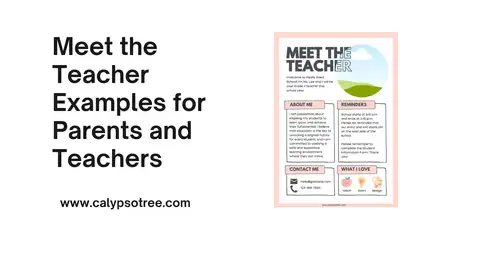Are you launching a new product or service? If you are compiling your Go-To-Market strategy presentation and asking yourself, what do I focus on first? Your GTM strategy is a roadmap to sending your product to the world.
It is more than just a schedule; It is an opportunity to connect with your audience and prove your worth. Suggested Format for Presenting Your GTM Strategy Well
This step-by-step How to create the presentation + examples and ideas + plenty of tips.
📜 What is a Go-To-Market Strategy?
GTM Strategy This is how it launches its products or services. It explains who you are selling to, how you will reach them and what makes your product unique from the one on a shelf. It means having the right message for the right audience at the right time.
Key Elements a Go-to-Market Strategy Should Cover
- Customer Segment: For whom are you building this?
- Caution: Unique Selling Proposition (USP) A customer will only purchase your product if it is set apart.
- Channels: What will you use to market your solution?
- Pricing Model: Which price point to go for
- Sales & Marketing Strategy: How will you get people in the door to buy a customer?
🎬 Go-To-Market Strategy Presentation Examples Outline
Slide 1: Introduction Start with a Bang(in your introduction)
Your first slide serves as the tone for your whole presentation. Again, you want it to be enticing and fun!
Key Points to Cover:
- Purpose of the Presentation: Explanation about what brings you here
- GTM Strategy Objective: Define what you are trying to accomplish with this strategy.
- Main things to Remember: Faith a tip of the iceberg
Introduction Slide Text (example)
“Welcome! We will now explore how we will launch [Product Name] off to market with a bang. We will review our strategy, its rationale, and how we plan to connect with an audience that resonates.
2. Problem Statement Slide: Why Does This Product Matter?
This is where you present the problem your product solves. Connect with the audience by explaining the pain points and how your product addresses them.
Key Points to Cover:
- Identify the Problem: Describe what’s missing or challenging in the market.
- Impact of the Problem: Explain why it’s a significant issue.
- Set Up Your Product as the Solution: Position your product as the answer to this problem.
Sample Problem Statement Slide Text
“Imagine a world where [problem your product addresses] no longer exists. That’s what we aim to achieve with [Product Name]. By understanding the needs of our audience, we’re ready to provide a solution that matters.”
3. Target Audience Slide: Who Are We Reaching?
Knowing your audience: This is where you can get into specifics about who your target customer is and prove that through research, there are those out there waiting for a product like yours.
Key Points to Cover:
- Miles: Age, location, income.
- Psychographics: Interest, lifestyle-values.
- Challenges: How much agony do they crave going through?
This is any text sample you would put on a target audience slide.
“Who we cater to is- [the specific audience], looking for [solutions your product provides]. They are sick and tired of [current challenges], so we´re here to help them.
4. Unique Value Proposition (UVP) Slide: What Makes Us Different?
Why You Original: Using a VAL slide, explain to customers why your product or service differs from similar products. Showcase how you are different- this is your time to shine!
Key Points to Cover:
- Core Value: (what your product does great)
- Comparison to Competitors: How you differ
- Benefits Over Features: Focus on the What’s In It for Me (WIIFM) — Not just what it is, but how it benefits me.
Sample UVP Slide Text
[Unique feature/benefit] you can only find in [Product Name]. It is supposed to [do something] easily, affordably and quickly.5. Product Positioning: How Do Rankings Look?
Product placement, or your little piece of the market. How your product fills the gap and why it is the best choice — showcase this.
Key Points to Cover:
- Market Positioning: Discuss how your product stands out among its competitors.
- Customer Perception: explain how customers see your product.
- Brand Voice: It is about conveying your brand personality and message.
Product Positioning Slide Text Example
“With [Product Name], the smarter choice in a marketplace full of products tied to regulations, expensive and drawing wide complaints about poor performance…” We are not just another option; we offer the ultimate [specific goal].
6. Pricing Strategy: How Do Your Customers Pay?
Pricing plays a huge role in the success of any product. How did you determine your price, and why was it too cheap for the market?
Key Points to Cover:
- What is the pricing model? Is it subscription-based, one-time, tiered pricing?
- How your price compares to competition (Competitive Landscape).
- Value for Money: Then emphasise how many customers will get from your product in terms of their money.
Pricing Strategy Slide Text Example
Our price for [Product Name] merely reflects the quality and value. Customers receive [key benefits] for just $[price]. This price point will make it accessible while maintaining our high-quality standard.
7. Distribution Channels Slide: Where Will Customers Find Us?
We must explain how you will reach your customers with the product. This slide details the delivery channels you will use.
Key Points to Cover:
- Consider online channels: website, social media pages, and retailers.
- Physical Channels: Brick-and-mortar stores, pop-up shops, and local events.
- Relationships: Any partners you have for distribution or that will help promote your product.
Slide Text Sample Distribution Channels
We will reach out to the segment below to make [Product Name] more accessible using these channels: · They are shopping more, whether online or in-store, and as a retailer, we want to be ready for these shoppers, wherever they shop.
8. Sales and Marketing – How Will We Get People Interested?
So, this is the course of action to reach your target audience. This is where you can discuss your marketing and sales strategy.
Key Points to Cover:
- Digital Marketing: Ads, social media and content marketing.
- Sales Methods: Door-to-door sales; online sale funnel; Upsell Techniques
- Customer Engagement: How you will remain at the top of your mind and get customers back!
Slide Text: Sales and Marketing Tactics Demo
We would run targeted campaigns on [platform or channel] to grab attention and juice up the excitement. What we want to do is, other than [content, social proof, engagement], initiate a bond with our audience as much as possible.
9. Goals and Metrics “How Do We Know Whether We Are Succeeding?
Measurable Goals for Every GTM Strategy These should be the metrics you will watch for to know if this strategy is working.
Key Points to Cover:
- Sales Goals: Units Sold, Revenue Target
- Engagement Metrics: But it all starts with traffic and social engagement.
- Customer Satisfaction: Retain Rate, Customer Review
Here is a sample of the goals and metrics slide text.
‘Outcomes of success look like [x],’ Where x might reach 1,000 sales in the first month. We’ll measure our success [xx metrics], which means we can — quickly and often.
10. Timeline Slide: When Will Things Happen?
Create a rough calendar of the most important events surrounding your launch. Speaking in terms of signals, this particular slide shows the audience you know what to do next.
Key Points to Cover:
- Launch: Pre-launch, launch and post-launch phases.
- Dates of Importance: Identify critical dates and deadlines.
- Milestones: What you are trying to accomplish: Run this with the remaining Milestones and then list them together.
Sample Timeline Slide Text
We have created a journey roadmap with definite milestones This is how we plan to roll out [Product Name] in the next few months, starting from prepping for launch and post-launch.
11. Team Slide: Who Made the Product?
This will display the team on this launch. It also will help to build credibility and prove your team’s expertise.
Key Points to Cover:
- Your Team Members: People who are essential to your GTM strategy.
- Role: a single sentence about what each person does.
- Credible + Expertise: Professional or Special Accomplishments
Sample Team Slide Text
“With our curriculum development, where cooperation with the industry is at its core, we took a different approach and attracted people from all over town who wanted to work here. Each person serves [Product Name] best interest from the[mention roles, ex. Marketing, sales, etc.]
12. Conclusion Slide: Wrap-Up with a Clear Call-to-Action
End with a firm conclusion. This slide is a reiteration of the point of departure for this strategy and what comes next.
Key Points to Cover:
- Key Takeaways: A quick summary of the strategy.
- What Comes Next: What is required during the post-presentation phase?
- Call-to-Action: If you want them to act, what do you wish your audience would do?
Sample Conclusion Slide Text
Thank you for participating in our crossing paths! Join us, and let’s make this a success [Product Name]. We are now keen and want to move forward, and hopefully, you are too.
Go-To-Market Strategy Slide
Go-To-Market Strategy Template
🏆Find Out What Results in a Great GTM Presentation
- Be Clear and Concise: Cut the jargon. Make your words understandable.
- Create Visuals: Graphs, charts, and images give you memes.
- Practice, Practice and Again Practice: The smoothness in your delivery builds confidence.
- Stay Focused on the Customer: Reiterate for your audience how each step helps them.
- End with Enthusiasm: Your love for the item you reviewed.
Final Thoughts
Making a Go-To-Market strategy presentation can be manageable. When you break down every bit of the strategy and some good old-fashioned simplicity, your audience will notice the line that follows the slides.
You can show them why this product is essential and that you are willing to make it succeed.
Follow the basics above, whether it is your 1st GTM presentation or you are presenting for a 10th time — this recipe will get closer to winning every page! Now, get out there and do you!

The content creator team at calipsotree.com is dedicated to making topics accessible to everyone, with over 9 years of experience in writing and breaking down complex concepts into easy-to-understand articles that answer readers’ financial questions.








